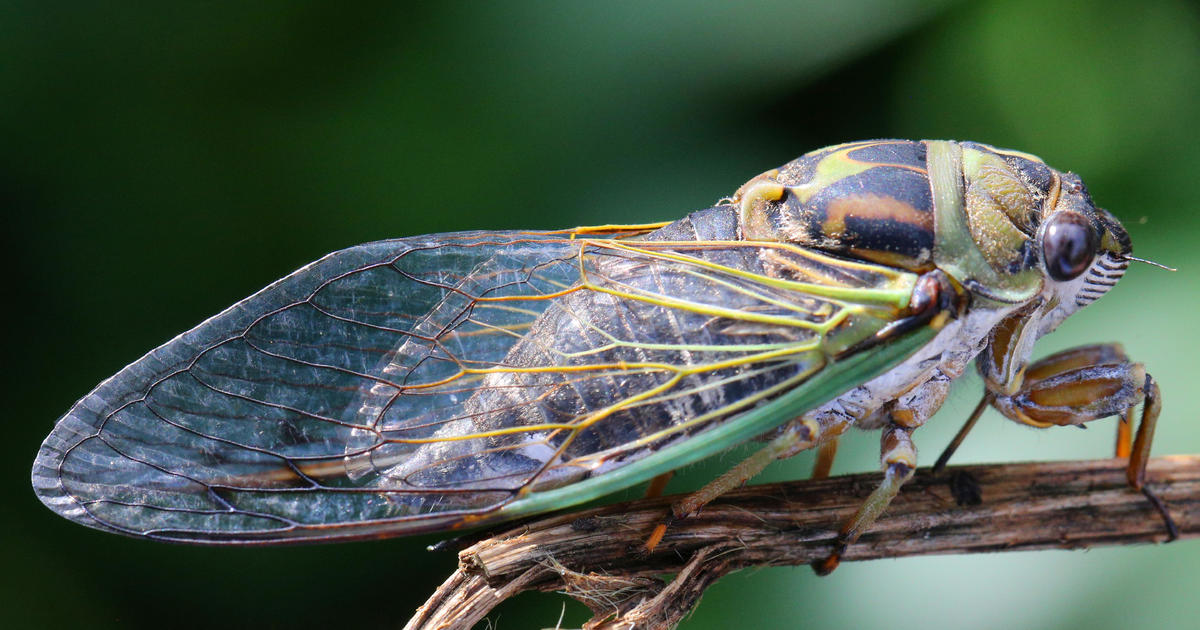Meteorologist reveals cause of colorful 100-mile-wide "cloud" over Denver
Meteorologists at the National Weather Center (NWS) in Boulder, Colorado, woke up to a bizarre radar signature Tuesday morning — a colorful, cloud-like pattern quickly moving toward Denver.
At first, Paul Schlatter, a meteorologist with the NWS, thought the 100-mile-wide "cloud" was just a flock of migrating birds. But the pattern was headed northwest, and migrating birds would normally be flying south in October.
"We hadn't seen a signature like that in a while," Schlatter told CBS News. "We detect migrating birds all the time, but they were flying north to south."
So, Schlatter said the weather center decided to crowdsource.
"Look at what's flying into Denver! Radar from last hour showing what we believe to be birds," the NWS tweeted early Tuesday. "Any bird experts know what kind?"
Schlatter said almost every answer was the same: "Butterflies."
It's unlike anything Schlatter has seen before.
"They really are everywhere. Signatures of butterflies that we mostly see are monarchs, you see those a lot across Denver, but we haven't seen this type of signature of butterflies before," he said. "We're excited about it."
Insects rarely produce such a coherent radar signature, Schlatter said. The bright colors on the radar indicate the shape and direction of the insects.
"Where it's dark purple — that's when the butterflies are flying directly toward or away from the radar beam," he explained.
Sarah Garrett, a lepidopterist at the Butterfly Pavilion in Westminster, Colorado, who has studied butterflies for more than a decade, said she wasn't surprised to see the giant cluster — but there is one thing that piqued her curiosity.
"We've seen this before from monarch butterflies," Garrett told CBS News. "What's most interesting to me about this is we're not 100 percent sure what type of butterflies they are."
However, Garrett agreed there has been an abundance of a species called painted ladies in Colorado, and therefore, they're most likely the insects appearing on the radar.
The state started seeing butterflies emerge in March this year, Garret said. That's nearly two months ahead of schedule.
"The painted ladies migrated back into regions of the northeastern U.S. earlier than normal, allowing for reproduction to occur earlier and the population to really grow substantially over the course of the summer," Garrett explained.
Painted ladies appear to migrate to the southwestern U.S. and northwestern Mexico in the fall. But that's not what they were doing on Tuesday.
Garrett said the butterflies were simply "going with the wind."
"The amount of energy it takes for a butterfly to use wind versus flapping their wings is substantial. So for them to pool together when they have a big wind current is not surprising," she said. "They're likely going from high elevation to low elevation, following their food source. Higher elevations are getting colder. There's no longer as much vegetation. These butterflies know they have to move."
Garrett she plans to work with a team at the Colorado Butterfly Monitoring Network, a statewide citizen project to monitor butterfly populations in Colorado, to keep a close eye on the painted ladies.
"We're focusing on species like the monarch, not like the painted ladies," Garrett said. "We don't have every answer on their behavior. This is definitely something we'll look into further."
Schlatter said he's also keeping an eye out for the colorful creatures.
"We've been looking every morning to see if they're taking off again," he said.
If they continue to fly in a cluster as big as Tuesday, the radar will pick it up, and Schlatter said he'll be able to see where they're headed next.
"But if I were them, I wouldn't leave Denver," he joked.




